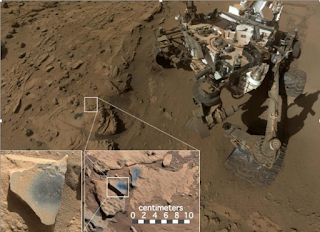The Amazing Artificial Intelligence We Were Promised
Is Coming, Finally
We have been hearing predictions for decades of a takeover of
the world by artificial intelligence. In 1957, Herbert A. Simon predicted that
within 10 years a digital computer would be the world's chess champion. That
didn't happen until 1996. And despite Marvin Minsky's 1970 prediction that
"in from three to eight years we will have a machine with the general
intelligence of an average human being," we still consider that a feat of
science fiction.
The pioneers of artificial intelligence were surely off on the timing, but they weren't wrong; AI is
coming. It is going to be in our TV sets and driving our cars; it will be our
friend and personal assistant; it will take the role of our doctor. There have
been more advances in AI over the past three years than there were in the
previous three decades.
Even technology leaders such as Apple have been caught off guard
by the rapid evolution of machine learning, the technology that powers AI. At
its recent Worldwide Developers Conference, Apple opened up its AI systems so that independent developers could
help it create technologies that rival what Google and Amazon have already built. Apple is way behind.
The AI of the past used brute-force computing to analyze data
and present them in a way that seemed human. The programmer supplied the
intelligence in the form of decision trees and algorithms. Imagine that you
were trying to build a machine that could play tic-tac-toe. You would give it
specific rules on what move to make, and it would follow them. That is
essentially how IBM's Big Blue computer beat chess Grandmaster Garry Kasparov
in 1997, by using a supercomputer to calculate every possible move faster than
he could.
Today's AI uses machine learning in which you give it examples
of previous games and let it learn from those examples. The computer is taught
what to learn and how to learn and makes its own decisions. What's more, the
new AIs are modeling the human mind itself using techniques similar to our
learning processes. Before, it could take millions of lines of computer code to
perform tasks such as handwriting recognition. Now it can be done in hundreds
of lines . What is required is a large number of examples so that the computer
can teach itself.
The new programming techniques use neural networks which are
modeled on the human brain, in which information is processed in layers and the
connections between these layers are strengthened based on what is learned.
This is called deeplearning because of the
increasing numbers of layers of information that are processed by increasingly
faster computers. These are enabling computers to recognize images, voice, and
text and to do human-like things.
Google searches used to use a technique called Page Rank to come
up with their results. Using rigid proprietary algorithms, they analyzed the
text and links on Web pages to determine what was most relevant and important.
Google is replacing this technique in searches and most of its other products
with algorithms based on deep learning, the same technologies that it used to defeat a human player at the game Go. During that
extremely complex game, observers were themselves confused as to why their
computer had made the moves it had.
In the fields in which it is trained, AI is now exceeding the
capabilities of humans.
AI has applications in every area in which data are processed
and decisions required. Wired founding editor Kevin Kelly likened AI to
electricity: a cheap, reliable, industrial-grade digital smartness running
behind everything. He said that it "will enliven inert objects, much as
electricity did more than a century ago. Everything that we formerly
electrified we will now 'cognitize.' This new utilitarian AI will also augment
us individually as people (deepening our memory, speeding our recognition) and
collectively as a species. There is almost nothing we can think of that cannot
be made new, different, or interesting by infusing it with some extra IQ. In
fact, the business plans of the next 10,000 startups are easy to forecast: Take
X and add AI This is a big deal, and now it's here."
AI will soon be everywhere. Businesses are infusing AI into
their products and helping them analyze the vast amounts of data they are
gathering. Google, Amazon, and Apple are working on voice assistants for our
homes that manage our lights, order our food, and schedule our meetings.
Robotic assistants such as Rosie from "The Jetsons" and R2-D2 of Star
Wars are about a decade away.
Do we need to be worried about the runaway "artificial
general intelligence" that goes out of control and takes over the world?
Yes but perhaps not for another 15 or 20 years. There are justified fears that
rather than being told what to learn and complementing our capabilities, AIs
will start learning everything there is to learn and know far more than we do.
Though some people, such as futurist Ray Kurzweil, see us using AI to augmentour capabilities and evolve together, others, such as Elon Musk and Stephen
Hawking, fear that AI will usurp us. We really don't know where all this will
go.
What is certain is that AI is here and making amazing things
possible.













